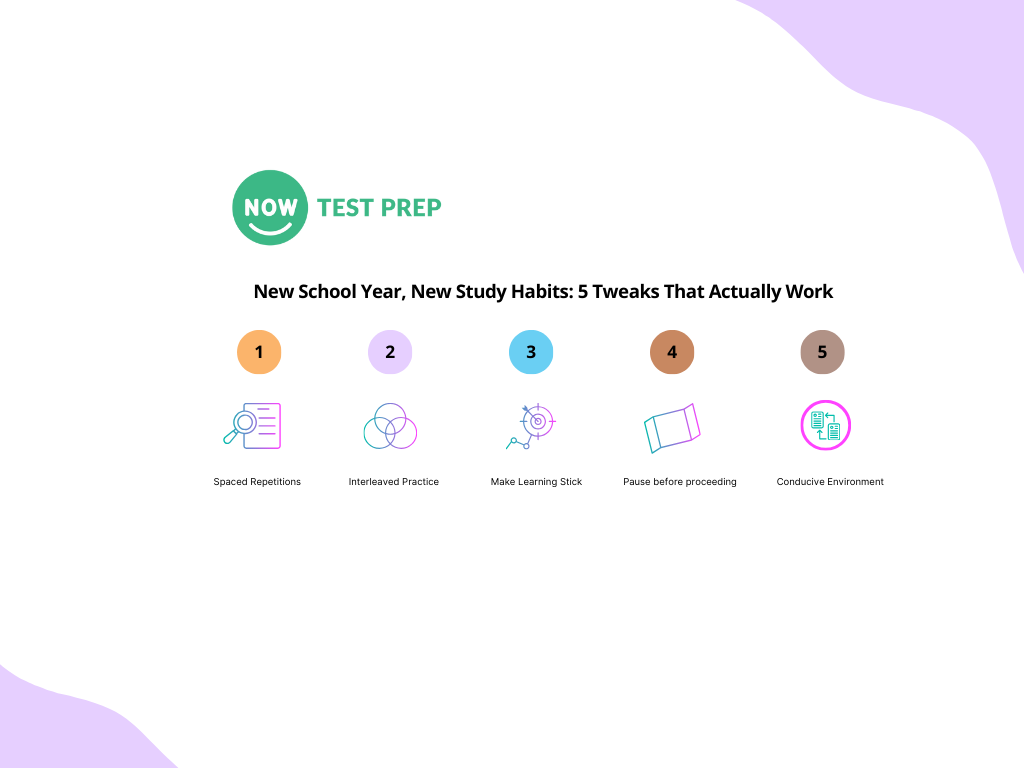Interleaved Practice Explained: Why Mixing It Up Helps Students Learn Better
Ever wonder why your child can work through an entire set of math problems perfectly at home, only to blank out when they see different problems on a test? It’s not that they didn’t study hard enough. It’s that practicing one type of problem over and over (called “blocked practice”) doesn’t fully prepare them for the variety of challenges they’ll face on exams.
There’s a smarter way to study: Interleaved Practice. It’s a research-backed strategy that mixes different types of problems or topics in a single study session. While it may feel harder at first, interleaving helps students actually learn, not just memorize, and prepares them to apply what they know in new situations.
What Is Interleaved Practice?
Interleaved practice is simple: instead of studying one skill or topic at a time (like doing 20 fraction problems in a row), students mix different types of problems or concepts in a single session.
For example:
- Blocked Practice: Doing 10 surface area problems, then moving on to 10 volume problems.
- Interleaved Practice: Mixing surface area and volume problems together in the same set.
It feels more challenging and that’s exactly why it works. The brain learns to tell problems apart, figure out which strategy to use, and practice switching between them, which is exactly what students need to do on tests.
Why This Works (And Why It’s Better Than One-Topic-at-a-Time Studying)
When students mix up different types of problems, their brains are doing more than just practicing—they’re building strong decision-making skills. They learn how to choose the right approach for each problem, instead of relying on patterns or guessing.
In short, interleaved practice:
- Boosts problem-solving skills: Students get better at figuring out which strategy to use—not just repeating the last one they saw.
- Improves long-term learning: It feels harder at first, but it leads to much better recall and understanding over time.
- Prepares students for real exams: Tests don’t come in neat, one-topic blocks. Interleaving mimics real test conditions, so nothing feels like a surprise.
How Parents Can Help at Home
Interleaved practice works best with a little structure and support. Here’s how you can help your child make it a habit:
- Mix practice problems: When reviewing math, add different types of questions in one set. For other subjects, mix old and new topics together.
- Use flashcards creatively: Instead of grouping cards by chapter or topic, shuffle them to keep your child thinking critically.
- Ask “Which strategy did you use?”: After they solve a problem, encourage them to explain their process out loud.
- Rotate subjects: For longer study sessions, encourage them to switch between topics (like math, then science, then back to math).
It might feel more difficult than “one thing at a time,” but that challenge is exactly what strengthens learning.
Final Thoughts
Interleaved practice may feel uncomfortable at first, but that’s what makes it so powerful. By mixing topics and problem types, students learn to adapt, think critically, and truly master what they’re studying—not just for the next quiz, but for the long haul.
Our reputation is built on word-of-mouth referrals and happy repeat customers.
We have never received a review with fewer than 5/5 stars.
Thank you to our amazing students and families!


